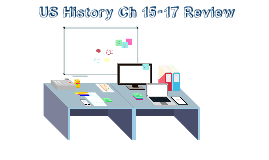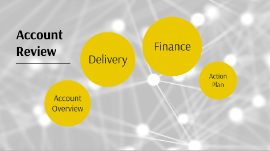Book Review Presentation Template
Transcript: Imagery Foreshadowing d Imagery paints vivid pictures through sensory details, enhancing the reader's experience by appealing to the senses. Descriptive language creates rich and realistic scenes, evoking emotions and immersing readers in the world of the story. Foreshadowing subtly hints at future events, building suspense and anticipation for readers. The author strategically plants clues and signals, preparing the audience for upcoming plot twists or developments within the narrative. Point of View Symbolism The narrative perspective, whether first-person, third-person, or omniscient, shapes the reader's understanding of the story. It influences the information provided, the character depth revealed, and the reader's connection to the events unfolding. Symbolism in the book adds layers of meaning and depth to the narrative. Objects, colors, and motifs represent abstract ideas, emotions, or themes, providing readers with a nuanced exploration of the story. c Literary Devices and Techniques Explore the intricate tools and techniques employed by the author to enhance the storytelling experience and convey deeper meanings within the narrative. The plot follows a structured narrative arc, progressing from the exposition to the climax and resolution. Each phase of the plot structure serves a specific purpose, building tension, conflict, and resolution in a coherent sequence. Plot Structure Conflict and Resolution Key Events Conflicts within the story create tension and drive character development. The resolutions of these conflicts provide closure and evolution for the characters, leading to growth and transformation within the narrative. Key events in the plot drive the narrative forward, shaping the characters' actions and decisions. These pivotal moments create tension, suspense, and emotional impact, drawing readers deeper into the story. Plot Twist and Climax Unexpected plot twists and a gripping climax keep readers on the edge of their seats, adding depth and intensity to the storyline. The climax resolves the central conflicts and reveals the culmination of the characters' journeys. Plot Summary ” Embark on a journey through the intricate plot structure and captivating storyline that unfolds within the pages of this literary work. e Reception and Reviews Impact on Readers The book's reception in the literary world has been positive, garnering accolades, awards, and praise for its innovative storytelling and compelling narrative. Critic reviews and reader feedback provide valuable insights into the book's strengths and areas for improvement. The book has a profound impact on readers, eliciting emotional responses, stimulating deep reflections, and fostering meaningful discussions. Through its powerful storytelling and thought-provoking themes, the book leaves a lasting impression on those who engage with its narrative. Book Review Presentation Template Strengths and Weaknesses a The book's strengths lie in its memorable characters, engaging plot, and powerful themes that resonate with readers. However, some weaknesses, such as pacing issues or underdeveloped subplots, may detract from the overall reading experience. Critical Evaluation Analyzing and Critiquing a Literary Work Engage in a critical review of the book, assessing its strengths, weaknesses, impact on readers, and overall reception within the literary community. Historical Context Genre and Themes Understanding the historical context of the book is essential to grasp the author's intentions. The time period of [Year] was marked by [Historical Event], which influenced the narrative and characters in profound ways. The book falls under the genre of [Literary Genre], exploring themes such as [Theme 1], [Theme 2], and [Theme 3]. These themes delve deep into societal issues, personal growth, and moral dilemmas. Overview of the Author Synopsis of the Book The author of the book, [Author's Name], was born in [Year] and is renowned for their contribution to [Literary Genre]. Their unique writing style has captivated readers worldwide. This book, [Book Title], follows the journey of [Main Character] as they navigate through [Central Theme]. The storyline is rich with twists and turns, keeping readers engaged from start to finish. Introduction to the Book Dive into the world of the author's creation as we dissect the nuances of this literary masterpiece. Main Characters b The main characters, such as [Character 1], [Character 2], and [Character 3], play pivotal roles in the storyline. Their unique traits, backgrounds, and relationships shape the narrative and drive the plot forward. Analysis of Characters ” Enter the character realm of the book as we dissect the personalities, motivations, and transformations that drive the narrative forward. Character Development Witness the growth and evolution of the characters throughout the book, from their initial introduction to the resolution of their story arcs. Analyze how their decisions, experiences, and

















